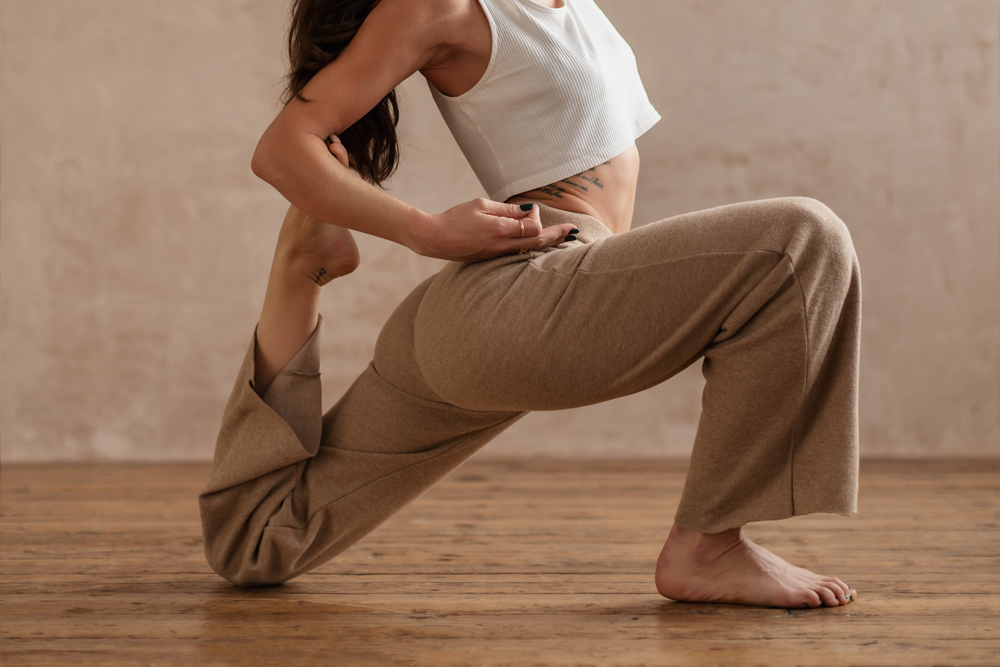In today’s fast-paced world, stress and anxiety have become all too common. Thankfully, yoga offers a gentle, effective way to release tension and find peace. By combining mindful movement with breath, yoga helps you reconnect with yourself and reduce the effects of stress. Here’s a simple flow of yoga poses designed to ease stress and anxiety, leaving you feeling calm and centred.
1. Child’s Pose (Balasana)
Child’s Pose is a grounding position that allows you to let go of tension and focus on your breath. This pose stretches the back, gently releases the hips, and encourages a feeling of safety and rest.
- How to do it: Kneel on the floor with your big toes touching and knees spread apart. Lower your torso between your thighs, reaching your arms forward or resting them alongside your body. Breathe deeply, letting each exhale release any stress you’re holding.
2. Cat-Cow Stretch (Marjaryasana-Bitilasana)
This gentle flow between Cat and Cow stretches and mobilises the spine, releasing tension in the back and neck. The rhythmic movement helps calm the mind and focus on the present.
- How to do it: Start on all fours, with wrists under shoulders and knees under hips. Inhale as you arch your back (Cow Pose), lifting your head and tailbone. Exhale as you round your spine (Cat Pose), tucking your chin to your chest. Repeat this movement for several breaths, allowing your spine to release.
3. Forward Fold (Uttanasana)
Forward folds help calm the nervous system and gently stretch the back of the body, reducing tension and anxiety. The position encourages a sense of surrender and can be deeply relaxing.
- How to do it: Stand with feet hip-width apart, then fold forward at your hips. Allow your head and arms to hang heavy, bending your knees if needed to ease any strain. Take a few deep breaths, focusing on letting go with each exhale.
4. Legs Up the Wall (Viparita Karani)
This restorative pose helps reduce stress by promoting circulation and calming the nervous system. Legs Up the Wall is especially helpful if you’ve been on your feet all day and need to relax.
- How to do it: Sit close to a wall, then lie back and extend your legs up, resting them against the wall. Allow your arms to rest at your sides, palms facing up. Close your eyes and focus on your breath, staying in the pose for several minutes.
5. Corpse Pose (Savasana)
Savasana, or Corpse Pose, is the final relaxation pose in most yoga practices. It encourages a deep state of rest, allowing the body and mind to fully let go of stress and tension.
- How to do it: Lie flat on your back with your arms at your sides, palms facing up. Let your feet fall naturally apart. Close your eyes and take slow, deep breaths, letting go of any remaining stress with each exhale. Stay here for at least five minutes, allowing your body and mind to rest completely.
Tips for a Calming Yoga Practice
- Breathe Deeply: Throughout each pose, focus on slow, deep breaths. Deep breathing helps signal to your body that it’s time to relax.
- Go Slow: Take your time moving between poses, staying mindful of how your body feels and adjusting as needed.
- Set the Mood: If possible, create a peaceful space for your practice. Dim lighting, a soft blanket, or calming music can help you relax more deeply.
Practising this simple yoga flow can help you reduce stress, reconnect with yourself, and find a sense of inner peace. Incorporating it into your routine, even for just a few minutes each day, can make a big difference in managing stress and feeling more balanced.



